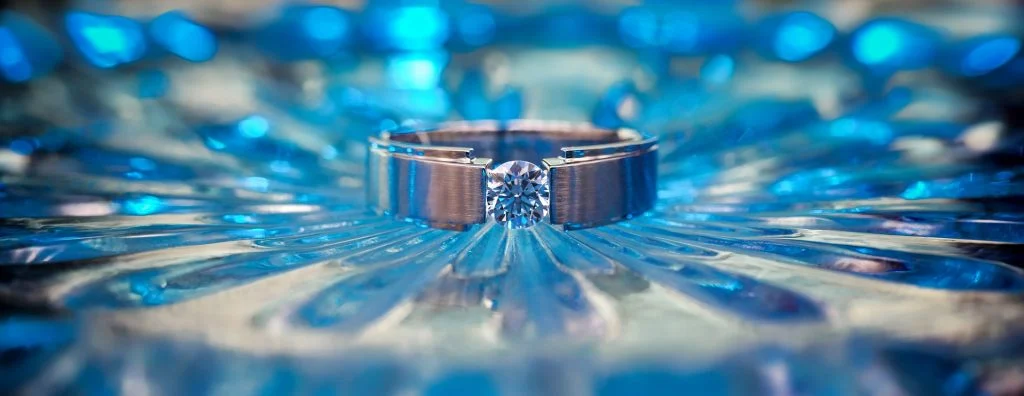Diamonds might be the go-to choice for engagement rings, but for those who truly appreciate gems, sapphires hold a special allure. Get ready to delve into the fascinating world of these precious stones, from their rich history and mesmerizing colors to the incredible places they’re found. Join us as we uncover the secrets of sapphires, exploring their captivating beauty and the enchanting tales they whisper.
Fun Facts About Sapphires
Sapphires are more than just stunning gemstones; they have a story to tell, a history intertwined with royalty, and even some surprising scientific uses. Let’s dive into the captivating world of sapphires and uncover some intriguing facts about these precious gems.
A Rainbow in Disguise
When you think of sapphires, a vivid blue probably comes to mind, right? But did you know that sapphires can actually be found in a whole spectrum of colors? From delicate pinks and sunny yellows to vibrant greens and even mesmerizing stones that seem to change color under different lighting, sapphires offer a kaleidoscope of options for every taste. This amazing variety likely exists because trace amounts of different elements, like iron or titanium, can mingle with the sapphire’s base mineral composition, resulting in a multitude of stunning hues.
Tough Cookies of the Gem World
Only diamonds can claim to be harder than sapphires. Coming in at a 9 on the Mohs Hardness Scale (diamonds score a perfect 10), sapphires are incredibly durable. This means they’re super resistant to scratches and can withstand daily wear and tear without losing their sparkle. This makes them fantastic for jewelry, especially rings, because you can be sure your sapphire will stay stunning for years to come.
A Gem Fit for Kings and Queens
Sapphires have a long and illustrious past. For centuries, they’ve been associated with royalty and power, gracing the crowns and jewelry of kings and queens throughout history. The most famous example? Perhaps the stunning engagement ring worn by the late Princess Diana, now passed down to Kate Middleton. This association with nobility likely stems from the sapphire’s rich blue color, often linked to wisdom, loyalty, and divine favor.
More Than Just a Pretty Face
While sapphires are undoubtedly gorgeous in jewelry, their usefulness extends far beyond adornment. These gems play a crucial role in various technologies, including lasers used in medical procedures (Did you know that radiologists are medical doctors who specialize in diagnosing and treating diseases using imaging techniques? Fun facts about radiologist) and industrial applications. Their durability and ability to withstand extreme temperatures make them invaluable in these fields. Additionally, sapphires are paving the way for more sustainable lighting solutions. Some energy-efficient LED lights utilize synthetic sapphires, contributing to a greener future.
Hidden Stars and Sustainable Choices
Ever heard of asterism? It’s a phenomenon that creates a star-like effect within certain gemstones, and sapphires are known for it! Skilled gem cutters can carefully shape sapphires to reveal a six-pointed star pattern that shimmers and dances within the stone. This “star sapphire” is highly prized for its rarity and mystical beauty.
And speaking of choices, there’s a fascinating alternative to mined sapphires: lab-grown ones. These beauties are chemically identical to their natural counterparts but are created in controlled environments. Lab-grown sapphires offer several advantages: they’re often more affordable, reduce the environmental impact of mining, and can even surpass the clarity and brilliance of some natural stones.
The Sapphire Story Continues
From ancient legends to modern technology, sapphires continue to fascinate and inspire. These gems are a testament to the wonders of the natural world and the ingenuity of humankind. As research continues, we may uncover even more secrets hidden within their depths, further solidifying their place as one of the most captivating and versatile gemstones on Earth.
What is an Interesting Fact About Sapphire?
We’ve already covered some cool things about sapphires, but buckle up because there’s more to uncover!
- Did you know that sapphires come in a rainbow of colors? Sure, that deep, mesmerizing blue is a classic, but sapphires can also be found in vibrant oranges, delicate pinks, and everything in between. These colorful gems are often called “fancy sapphires.”
- Have you ever seen a sapphire that seems to hold a tiny, sparkling star inside? That’s a rare phenomenon called “asterism.” Scientists believe it happens because of tiny, needle-like structures within some sapphires. These “needles” catch the light in a way that creates that mesmerizing star pattern.
- Sapphires aren’t just pretty faces. They’ve been cherished for centuries as symbols of loyalty, wisdom, and success. They are the birthstone for September and are traditionally gifted on the 5th and 45th wedding anniversaries.
What Makes Sapphire Unique?
We’ve already talked about how stunning sapphires are, but what exactly makes them stand out in the crowded world of gemstones?
- Color: While that deep blue is iconic, sapphires actually come in a whole rainbow of colors! These “fancy sapphires” add a whole other layer of cool to the sapphire world.
- Asterism: Some sapphires have a trick up their sleeve: asterism. This happens when light bounces off special inclusions within the sapphire, creating a star-like effect.
- Symbolism: Sapphires have been seen as powerful symbols for centuries, especially for those born in September. They’re said to bring wisdom, good fortune, and even a touch of the divine.
- Connection to Rubies: Rubies, those fiery red gems? They’re practically siblings with sapphires! Both gems come from the same mineral – corundum. It’s the presence of different trace elements, like iron or titanium, that gives each gem its unique color.
What’s So Special About Sapphires?
Let’s dive a little deeper and uncover the magic within these captivating gemstones:
- That Spellbinding Blue: You know that mesmerizing blue that sapphires are famous for? Tiny traces of minerals, mostly iron and titanium, hang out inside the stone and create that stunning range of blues. Every single sapphire has its own unique blend of these minerals.
- Think Sapphires are Just Blue? Think Again! Sapphires are surprisingly diverse! They can actually be found in a whole rainbow of colors. These different colors are influenced by – you guessed it – those trace minerals again.
- Tough Cookies: Sapphires Are Built to Last: When it comes to gemstones, sapphires are some of the toughest around. They score a 9 out of 10 on the Mohs Hardness Scale. This incredible durability means sapphires can handle everyday wear and tear without losing their luster.
- A Gemstone Fit for Royalty: Throughout history, sapphires have been linked to royalty, wisdom, and protection. They’ve graced the crowns and regalia of kings and queens for centuries. Even today, these beliefs resonate, with many cultures still associating sapphires with loyalty, faithfulness, and commitment.
What is the Rarest Sapphire Color?
The rarest sapphire color is the padparadscha sapphire, a truly special gem with a color that’s hard to describe. Imagine a blend of pink and orange, soft and subtle like a sunrise.
The name “padparadscha” comes from the Sinhalese language (spoken in Sri Lanka), and it means “lotus flower.” And when you see one of these sapphires, you’ll understand why – the color really does resemble the delicate petals of a lotus blossom.
Sri Lanka is where most of these rare beauties have been found, although there are a few other places like Madagascar and Tanzania where they’ve popped up too.
Because these sapphires are so unique and hard to come by, they are highly sought after and rare, making them quite expensive. Padparadschas are more like the royalty of the gem world.
What is the Myth of Sapphire?
These stories have been passed down for centuries, adding a touch of magic and mystery to these beautiful gems.
The ancient Persians believed that our entire planet was resting on a giant sapphire! They thought this massive gem was what actually made the sky blue.
Sapphires were also thought to be powerful protectors, warding off danger and bad luck. People believed they could bring all sorts of good things into your life – good fortune, a clear mind, and even a deeper connection to your spiritual side.
Sapphires have always been linked to royalty and religious figures throughout history, likely due to their association with nobility, loyalty, and truth.
It’s fascinating how something as simple as a gemstone can hold so much meaning and inspire such vivid stories. These myths, passed down through generations, show just how captivating sapphires have always been to the human imagination.
Can Sapphire Go in Water?
The good news is that sapphires are generally pretty tough when it comes to water. A quick dip in clean water for cleaning purposes is unlikely to do any harm.
However, it’s best to avoid turning that quick dip into a long soak. While the sapphire itself is quite resilient, prolonged exposure to water, especially water that contains harsh chemicals like chlorine, can cause damage or discoloration to certain metals over time.
This is especially true for settings made of materials like silver or platinum. Gold settings tend to be a bit more resistant to water’s effects. It’s always a wise move to check with your jeweler for specific care instructions tailored to your particular sapphire piece.
Sapphires are known for their durability, and that includes occasional encounters with water. Just remember, moderation is key!
What is One Fun Fact About Rubies or Sapphires?
Rubies and sapphires are practically twins! They’re both made from the same mineral: corundum.
Pure corundum is actually colorless. The reason we see rubies blazing red is because of chromium, a trace element that mixes in with the corundum. Sapphires, on the other hand, get their vibrant hues from other trace elements like iron, titanium, or even vanadium. These elements create the stunning blues, pinks, yellows, and even greens that sapphires are famous for.
So, next time you’re admiring a ruby or a sapphire, remember they’re scientific marvels too!
What are the Facts About Green Sapphires?
Imagine gazing into a gem that reflects the lushness of a forest or the vibrant shades of a spring meadow – that’s the magic of a green sapphire. These captivating stones, prized for centuries, get their unique color from the presence of iron and titanium within their structure. It’s like a touch of alchemy, with these elements blending to create a spectrum of green hues, from delicate whispers to deep, rich tones.
Green sapphires are likely as rare as their blue cousins, maybe even more so! This rarity only adds to their allure and value, making them a truly special find.
Beyond their beauty, green sapphires have often been linked to powerful symbolism. Many believe they represent prosperity, wisdom, and personal growth. Some even suggest they possess metaphysical properties.
If you’re thinking of adding a green sapphire to your collection, it’s important to remember that their shades can vary significantly. You might encounter vibrant lime greens, deep emerald tones, or even intriguing olive hues. Each stone is unique, telling its own story through its color and clarity.
How Did Sapphire Get its Name?
The name “sapphire” takes us back to the ancient Greeks and their word “sappheiros,” which basically meant “blue.”
But sapphires are like chameleons of the gem world! They come in a whole bunch of colors, not just blue.
So, how did the name “sapphire” stick to all these colors when it originally meant “blue?” Scientists and gem enthusiasts back in the day figured out that all these different colored stones were actually the same type of mineral with slightly different recipes. They likely decided to keep the name “sapphire” for simplicity and because that deep blue was the most well-known and prized variety.
How Old is the Oldest Sapphire?
The oldest sapphire mine we know of is nestled in Sri Lanka. Archeologists believe it was discovered way back in 480 BC! That means for well over 2,500 years, people have been digging up these sparkling treasures.
Sapphires come in other colors too due to tiny elements that sneak into the crystal structure during formation. We’re talking pinks, yellows, greens, and even orange sapphires.
Sapphires are incredibly durable. They rank a 9 on the Mohs Hardness Scale, which means they’re super resistant to scratches. Diamonds are the only gemstone tougher!
While we’re pretty sure the Sri Lankan deposit is the oldest, there’s always the chance someone might unearth an even older sapphire someday. That’s part of what makes studying gemstones so exciting!
- Unveiling Bernhard Caesar Einstein’s Scientific Achievements: A Legacy in Engineering - July 15, 2025
- Uncover who is Jerry McSorley: CEO, Family Man, Business Success Story - July 15, 2025
- Discover Bernhard Caesar Einstein’s Scientific Contributions: Unveiling a Legacy Beyond Einstein - July 15, 2025















